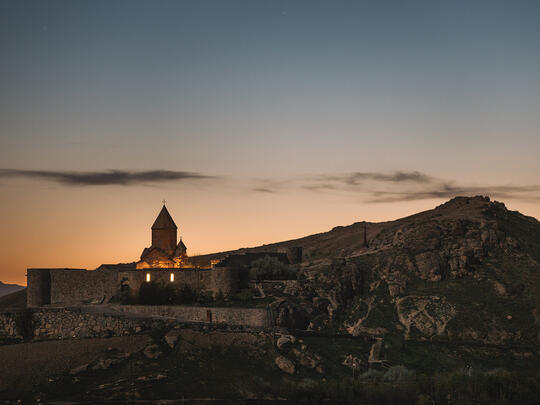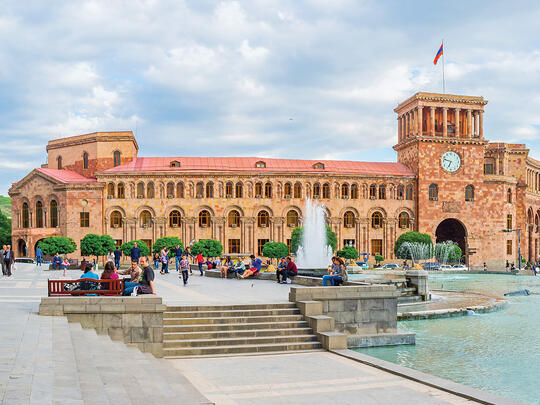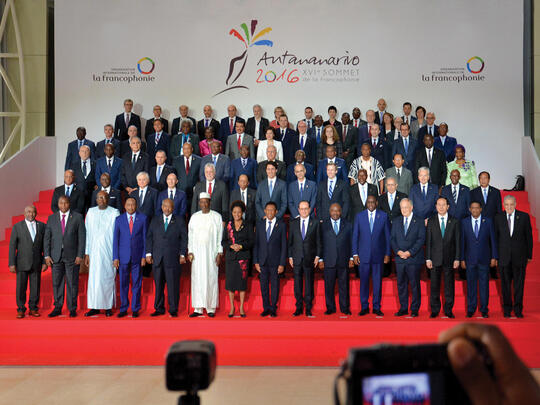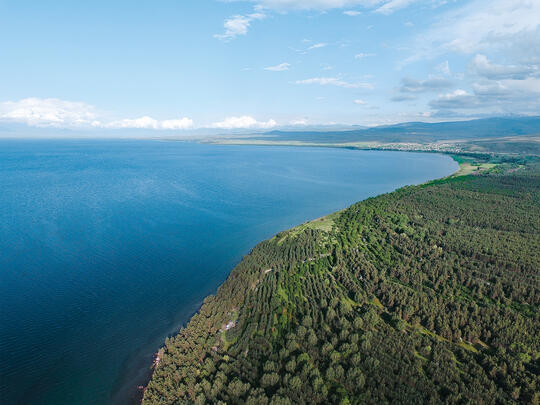Every morning at 10:10 a.m., the school bell rings and children pour into the courtyard of the AGBU Alex Manoogian School, nestled in the north end of Montreal. Here, schoolyard chatter flows in no fewer than three, sometimes four languages with
students constantly switching with ease between English, French, Armenian, and occasionally Arabic as well.
The fact that the students at this AGBU school speak a minimum of three languages with full native-level fluency is an afterthought here. What the faculty is really proud of is that their eductional institution is home to a pioneering model for integrating Syrian and other Middle-Eastern refugees into Canadian society.
The Alex Manoogian Integration Model
When Armenians fleeing civil war in Iraq started arriving in Canada as refugees around 2008, Principal Chahé Tanachian understood that the AGBU Alex Manoogian School was in a unique situation within Canada. Most of the faculty at the school spoke Armenian, a significant advantage to accommodate the academic needs of students and their families who in most cases spoke neither English nor French.
Perhaps more importantly, as a private school, the administration had the freedom to adjust the curriculum to the needs of new students in a way that public schools could not. In fact, the school was able to overcome some of the biggest hurdles that Tanachian saw within the public integration system.
The traditional Québécois model places foreign students first in a classe d’acceuil, or welcoming class, for French as a second language for up to two years, at which point the students are required to join their native-speaking French classmates in the rest of the school. However, the French language classes often lacked the resources necessary to help students adequately learn the language, leaving many with an insufficient level of French by the end of their second year. Even if some students developed a strong enough grasp of the French language within the timeframe, they then had to face the challenge of not having been exposed to other subjects such as math, history or science for however long they were in the classe d’acceuil. “They’re constantly behind in something academically,” Principal Tanachian explains—by no fault of their own. To resolve this education gap, “we created a new classe d’acceuil, where everything—French, Armenian, arts—was [taught] in that classroom with the same group.”

The next issue they confronted was the fact that classes were simply too big for teachers to give each student the attention he or she needed. As a private school, Alex Manoogian was able to cap the number of students to 17 per class; just over half of the average public school student limit. The administration also ensured that each class had one full-time and one part-time teacher.
Going Beyond Academia
Faced with an influx of students fleeing war in their home countries, the AGBU Alex Manoogian School took the additional step of providing every one of its faculty members with psychological counselling training conducted by Montreal-based doctor of clinical psychology Garine Papazian-Zohrabian. Rashida Chenouf, who joined the school to teach the classe d’acceuil and is now a French teacher, is one of the very few teachers at the school who does not speak Armenian. After a casual conversation, it becomes readily apparent why she was chosen for the job: her calm demeanor and welcoming tone, combined with her native Arabic helped her put the children at ease.
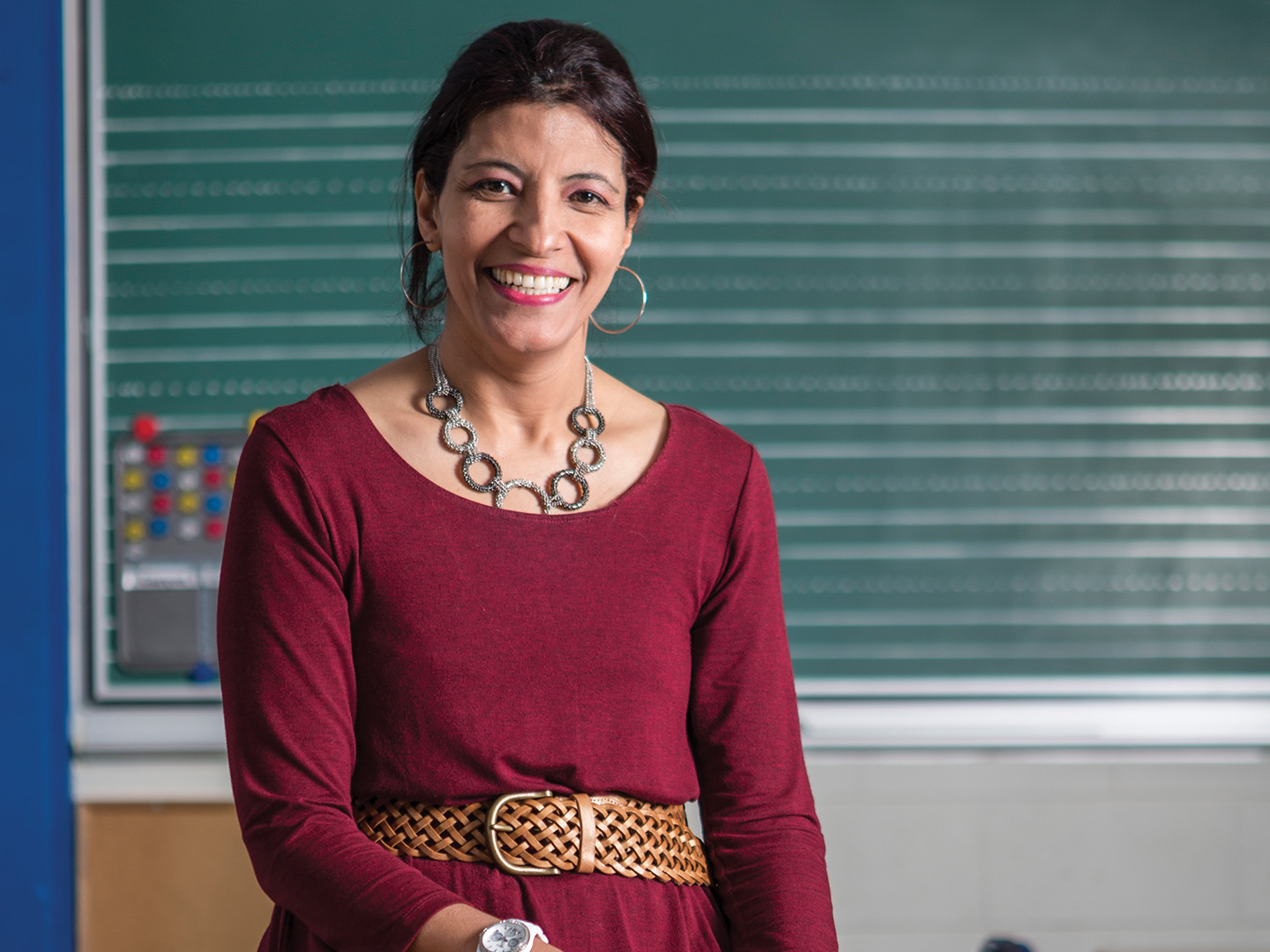
It came naturally to her to try to offer the students the type of help they needed, but it’s the education she received with the rest of the faculty that helped her understand exactly what the children needed. “I saw myself in the students, but I was also learning, and as Ms. Papazian-Zohrabian spoke, I kept thinking of examples—‘Oh, that’s why this child acts this way.’”
The integration model designed at the AGBU Alex Manoogian School also gave her the freedom to tailor her classes to exactly what the students need. “Even though they had left war in Syria, some of them wanted to go back because they didn’t feel good.” Her solution was to include Canadian history in the curriculum. “I told them: ‘Don’t worry, we’re all immigrants here. I’m an immigrant too, just like you.’ I taught them history to show them that in Canada, they’re not alone: they may be new, […] but they just needed time, and that we are all Canadian.”
She adapted the curriculum not only to provide them with material to make them feel more at home, but also to help mitigate symptoms of trauma. “I was a teacher, but I was also a mom and a psychologist. Sometimes, they couldn’t follow, so I stopped teaching, and I asked what they wanted to do. […] We danced often, we sang. I taught them yoga—they loved it. […] Gradually, I saw their smiles come back.”
Not Just for Students
Chenouf also highlighted another crucial part of the school’s approach to integration—the inclusion of families as part of the process. “If the parents were uncomfortable, the children were too.” One of the biggest sources of stress for arriving families was finding money; so the AGBU Alex Manoogian School partnered with the family support organization Hay Doun to help provide for families. The first thing they did was to help find apartments; but soon after that, they began coordinating job fairs and making arrangements with local businesses and organizations. One such example was how the Armenian community reached out to the prestigious Canadian jewelry company Birks, which agreed to provide two grants of $25,000 CAD for arriving parents to become jewellers and integrate into the Canadian market. To date the funds have allowed for more than 30 professional certifications.
Ani Mardirossian is the mother of the first students to attend the school’s classe d’acceuil. Her family came to Montreal from Aleppo via Beirut and, with the support of AGBU, were able to send all three of their children to learn French at the school. Her daughter, who has since graduated from the school and is excelling academically at a Francophone public school, often drops in to shadow some of the arts and photography classes the Alex Manoogian’s Sunday School has to offer. “She is very nostalgic for Alex Manoogian because it was like a family for her when she came.”

“My children are very happy. And as parents, seeing our children happy makes us happy too.” For Mardirossian, the aid provided to their children made a big difference already; but they further helped her integrate into the community as well. Another big part of the support provided by the Armenian community is a weekly event hosted for Syrian Armenians. This event, with special chefs hired to cook Syrian food, is attended by both newcomers and established Canadians—and together with some holiday festivities, it serves as both a fundraiser and a space for Syrian Armenians to find comfort. Here, Mardirossian met and befriended many Canadians, but she also became reacquainted with people she had known in passing back in Aleppo.
Catalysts for Conversation
With some alumni who have gone on to be valedictorians at Francophone public schools, it is undeniable that the tight-knit Armenian communities both in Canada and in Syria and the involvement of AGBU have made a huge difference for Armenians who came to Montreal as refugees. But the impact of Alex Manoogian as a school is more profound than that.
Ever since the start of the refugee crisis resulting from Syria’s civil war, grassroots organizations across Canada have been engaged in the same conversation Principal Tanachian has noted. That while it is important to provide refugees a safe haven, it is just as important to offer them a support system for integration.
The AGBU Alex Manoogian School may have had the financial freedom to implement its own model, but the resulting resounding success has provided much hope not only for the Syrian Armenian community of Montreal, but also the education system across the country. Demonstrating that there are integration models that work exceptionally well and that
human lives benefit from them, leaves no doubt that it is worth the investment.
Banner photo by Allen Mceachern


